
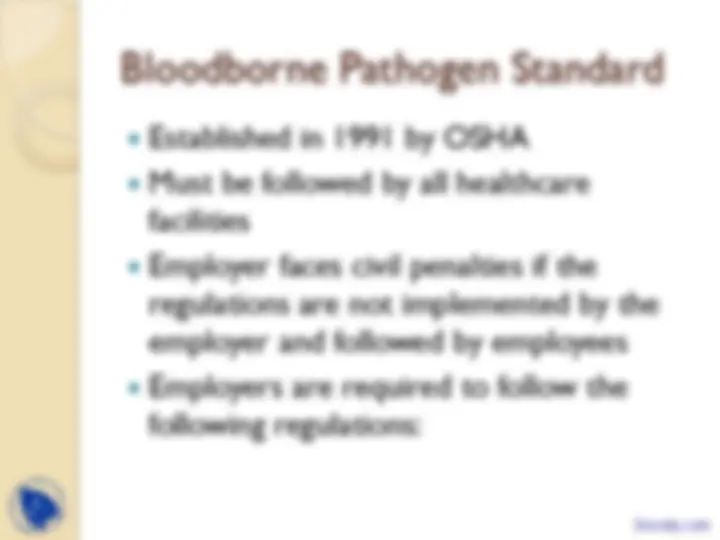
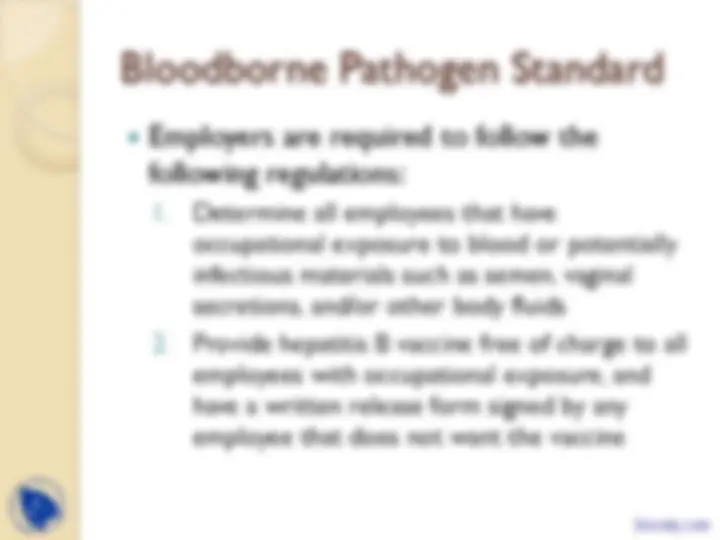
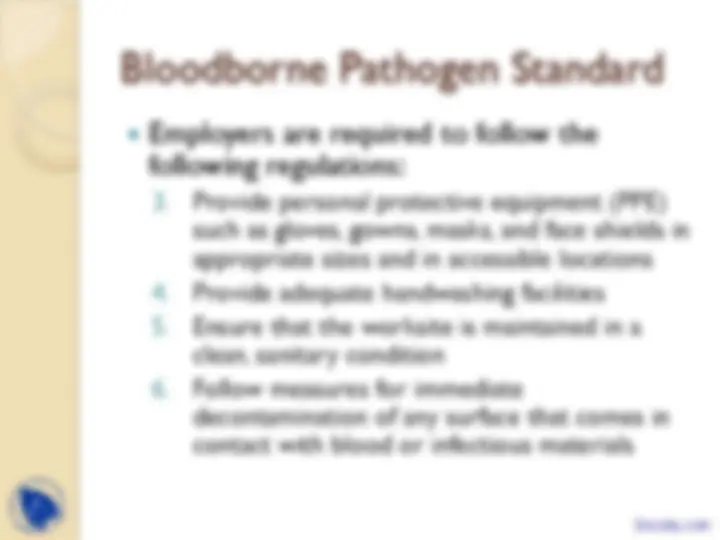
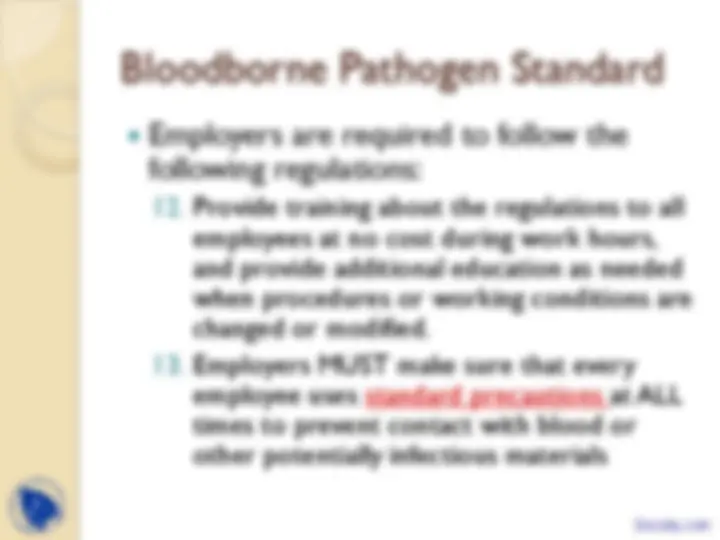
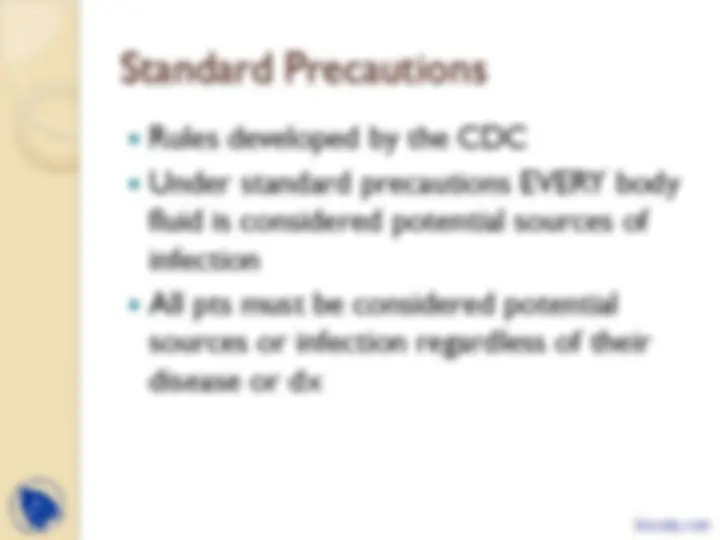
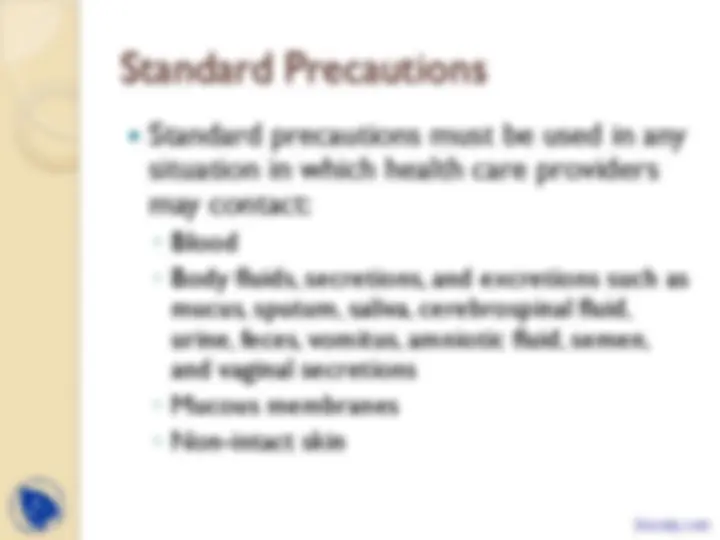
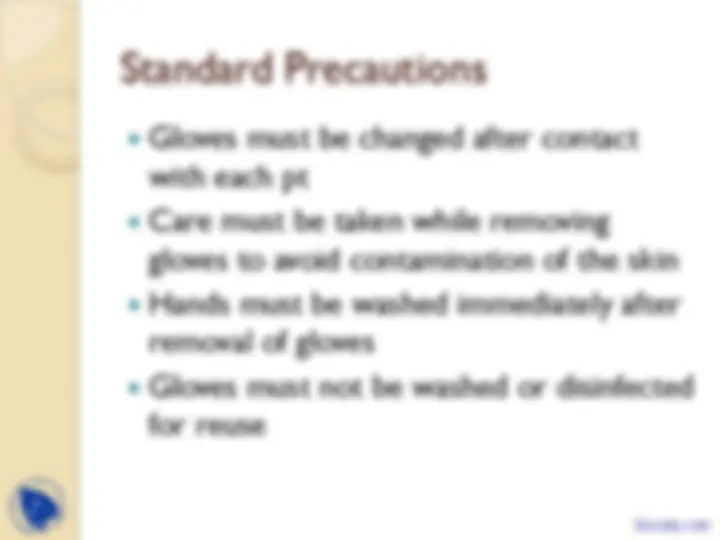
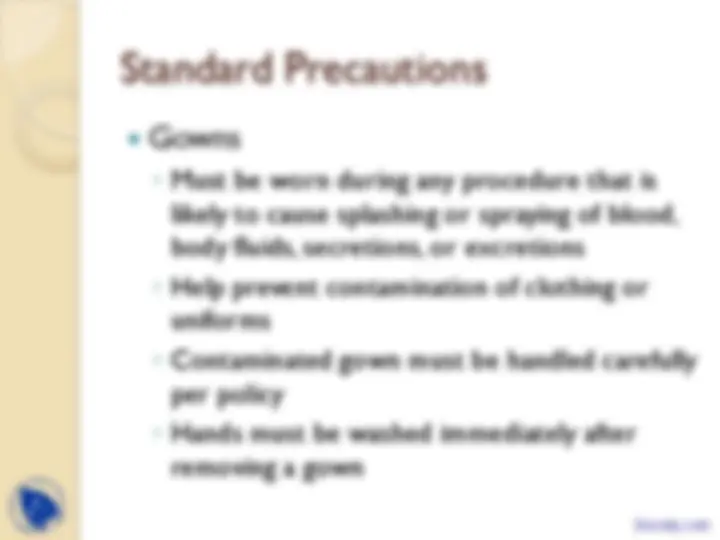

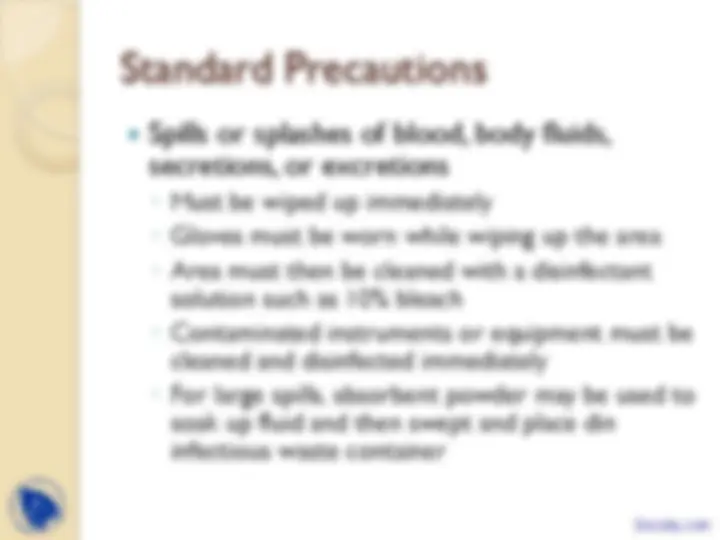
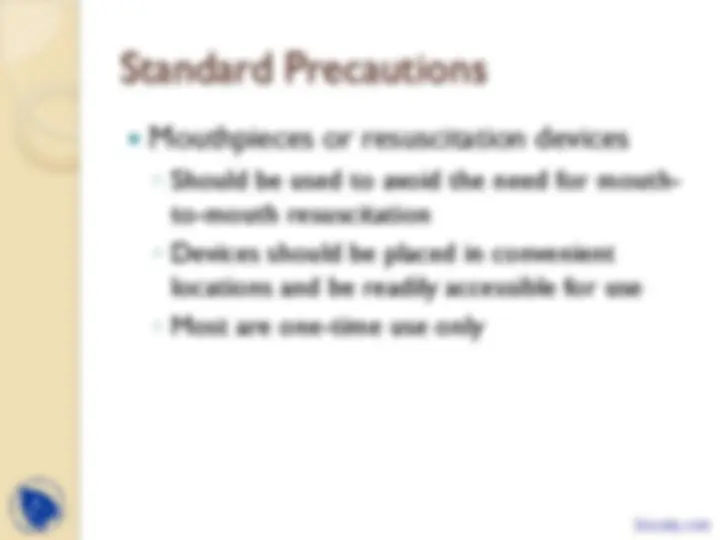
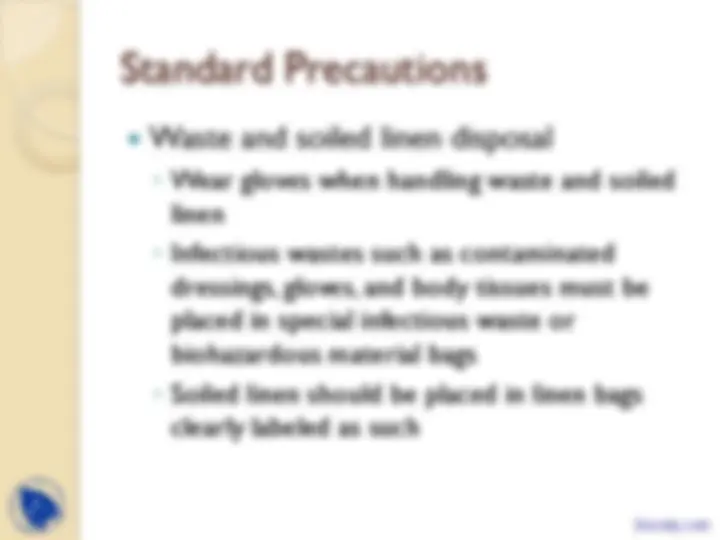
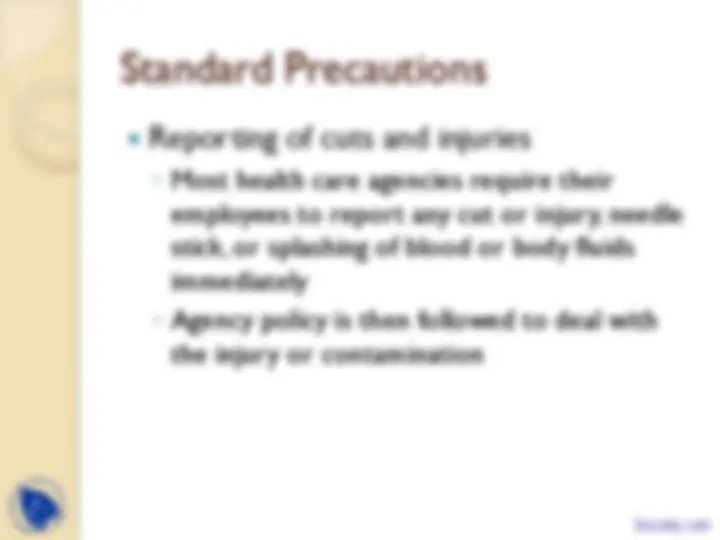


Study with the several resources on Docsity

Earn points by helping other students or get them with a premium plan


Prepare for your exams
Study with the several resources on Docsity

Earn points to download
Earn points by helping other students or get them with a premium plan
Community
Ask the community for help and clear up your study doubts
Discover the best universities in your country according to Docsity users
Free resources
Download our free guides on studying techniques, anxiety management strategies, and thesis advice from Docsity tutors
An overview of the occupational safety and health administration (osha) bloodborne pathogen standard and the centers for disease control and prevention (cdc) standard precautions. Employers in healthcare facilities are required to follow these regulations to protect employees from exposure to bloodborne pathogens such as hbv and hiv. The employer's responsibilities, including providing vaccinations, personal protective equipment, and maintaining a clean worksite, as well as the importance of handwashing and using gloves, gowns, masks, and other protective equipment.
Typology: Slides
1 / 21

This page cannot be seen from the preview
Don't miss anything!














◦ Blood ◦ Body fluids, secretions, and excretions such as mucus, sputum, saliva, cerebrospinal fluid, urine, feces, vomitus, amniotic fluid, semen, and vaginal secretions ◦ Mucous membranes ◦ Non-intact skin
◦ Major aspect of standard precautions ◦ Most important method used to practice aseptic technique
◦ Must be worn during any procedure that is likely to cause splashing or spraying of blood, body fluids, secretions, or excretions ◦ Help prevent contamination of clothing or uniforms ◦ Contaminated gown must be handled carefully per policy ◦ Hands must be washed immediately after removing a gown
◦ Use extreme care when handling sharp objects to avoid accidental cuts or punctures ◦ Needles must never be bent or broken after use ◦ Needles must be left uncapped and attached to the syringe ◦ Place in a puncture-resistant sharps container immediately after use ◦ Surgical blades and other sharp instruments must also be discarded in the sharps container
◦ Must not be emptied or reused ◦ Federal, state, and local laws establish regulations for the disposal of the sharps containers ◦ Follow the policy at your facility
◦ Should be used to avoid the need for mouth- to-mouth resuscitation ◦ Devices should be placed in convenient locations and be readily accessible for use ◦ Most are one-time use only
◦ Wear gloves when handling waste and soiled linen ◦ Infectious wastes such as contaminated dressings, gloves, and body tissues must be placed in special infectious waste or biohazardous material bags ◦ Soiled linen should be placed in linen bags clearly labeled as such